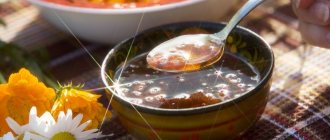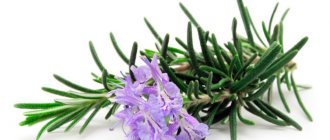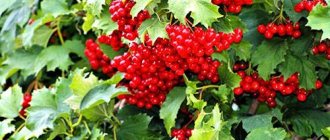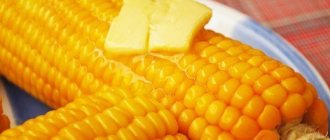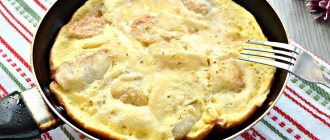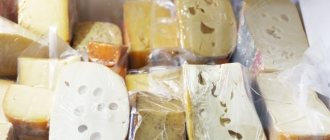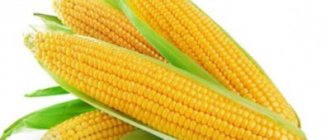BellaRussa — Dec 22nd, 2021 Categories: Drying
Tags: Dried corn, Dried cereals
The ancient Aztecs, who lived in the territory of modern Mexico 12 thousand years ago, began cultivating corn. It’s hard to imagine, but it is their merit that we now have many varieties of corn and a huge number of recipes for cooking corn dishes.
Ingredients: corn Time to add: Summer, Autumn
If you like boiled corn, then unfortunately you will have to wait for the season. After all, only corn at the “milk ripeness” stage is suitable for boiling, and such corn cannot be stored for long.
For drying, ripe cobs are taken, which are collected from late summer to late autumn. The corn is cleared of leaves (but not torn), the corn silks are removed, and the corn itself is hung by the leaves under a canopy.
Feed corn can be stored this way all winter; it is picked and used as needed.
How to dry corn at home
September corn is best suited for winter harvesting - by this time it is fully ripened. The cobs should be smooth, free of dark spots and mold. How to dry corn correctly:
- Sort through the cobs, peel back the leaves to reveal the contents.
- Remove all hairs. There is no need to remove the leaves; they are folded back towards the stem.
- Tie the cobs into a braid by the leaves and stems and hang them in a ventilated area (on the veranda or in the attic). If space allows, you can hang them individually.
Corn is considered completely dry if the kernels pop out of the cob when shaken. To preserve grain for the winter, it is better to knock it out of the cob and put it in plastic containers or canvas bags.
If you want to dry milk corn, you must first remove the grains from the cob. They are first dried in the oven on a baking sheet covered with parchment paper. When the moisture comes out, you can dry the grains in the open air.
How to prepare a vegetable for drying
As noted earlier, corn can be dried whole cobs or individual kernels. Therefore, the method of preparing for the process will be different in the two cases. The first option is ideal for owners of a private house, because such estates usually have a dry cellar or ventilated basement. Preparing a cereal product for drying consists of several steps:
- Select quality specimens.
- Bend back the leaves on each cob, but do not tear them off.
- Next, tie each cob separately or form a braid out of them.
- Hang the resulting “garland” in a place where there is good air circulation. The readiness test is simple - even with a slight shake, the grains will begin to pop out of the cob on their own.
To dry corn grains, you should perform the following steps at the preparatory stage:
- Remove all leaves and stigmas (hairs) from the cob.
- Carefully separate the grains. To facilitate this rather labor-intensive procedure, immerse whole cobs in boiling water for 5–7 minutes, and then rinse with a stream of ice water.
- Place the grains removed from the cob on a piece of dry cloth spread on a flat surface.
- Let dry overnight. There should be no moisture remaining on the surface.
Vegetable products prepared in accordance with all the rules will undergo the drying process using any method without loss.
How to dry corn for popcorn
The most popular dish made from dried corn is popcorn. If you cook it without unnecessary additives, it not only does not harm your health, but is even healthy.
Popcorn kernels are stored in plastic bags in the freezer. To prepare it, you just need to take it out of the freezer, place it in a hot frying pan and cover with a lid. A tasty and healthy product will be ready in a couple of minutes.
If you decide to prepare corn silk for the winter, then you need to collect it from summer, milk corn. Only those fibers that are hidden inside the leaves can be dried. Black tops are not suitable for preparing medicinal infusions. Dry them by laying them out on a sheet of paper in a ventilated room, in an electric dryer (at a temperature of 40 degrees) or in an oven with the door open. Corn silks are stored in canvas bags.
Dried corn can be used to make not only popcorn, but also many different dishes, such as hominy or tortilla chips. If the grains are not ground into flour, they must be soaked before cooking in the same way as beans.
The ancient Aztecs, who lived in the territory of modern Mexico 12 thousand years ago, began cultivating corn. It’s hard to imagine, but it is their merit that we now have many varieties of corn and a huge number of recipes for cooking corn dishes.
If you like boiled corn, then unfortunately you will have to wait for the season. After all, only corn at the “milk ripeness” stage is suitable for boiling, and such corn cannot be stored for long.
For drying, ripe cobs are taken, which are collected from late summer to late autumn. The corn is cleared of leaves (but not torn), the corn silks are removed, and the corn itself is hung by the leaves under a canopy.
Feed corn can be stored this way all winter; it is picked and used as needed.
Use for porridge, cereal, popcorn and other dishes
Any dish made from corn will be tasty and healthy, delighting not only adults, but also children. In order to use dried grains as ingredients, you will first need to boil them. The product is placed in a container and filled with water so that it is completely covered with liquid.
After the first 10 minutes of cooking, water is added to the pan and this continues for the entire 2 hours during which the corn will be boiled. At the end of the process, the cooked mass is mixed with oil.
If you soak the corn in water overnight, it will take no more than one hour to cook.
Dried corn is used in the preparation of all kinds of porridges, the most famous of which is mamalyga. Corn porridges can be salty: boiled with meat or various vegetables. Also no less tasty are sweet dairy dishes with the addition of vegetable or butter. Flour is often made from dried corn, which is later used for baking bread and confectionery products.
In addition, the well-known corn flakes are produced from it, which are consumed both in pure form and in combination with warm milk. Starch is made from corn and is used in cooking as an adhesive component.
Popcorn, which is popped corn kernels when heated, is very popular. To prepare it, the culture is dried in one of the following ways, and then placed in plastic bags in the freezer. To get popcorn, it will be enough to remove the corn from the freezer, place it in a well-heated frying pan and cover with a lid. In 2-3 minutes, the healthy and tasty dish will be ready to eat.
This crop is grown not only for the purpose of cooking; it plays an important role in medicine. Corn is actively used as a choleretic agent, as well as for the treatment of liver, urolithiasis and pancreatitis. It helps those who want to lose excess weight, since its use significantly reduces appetite. Dried corn grains perfectly clean blood vessels, significantly minimizing the risk of strokes and heart attacks.
In addition, regular consumption of the product helps reduce blood cholesterol levels and improve digestion. Corn has found application in cosmetology: various face masks are made from it at home. Such products help cleanse the skin and get rid of acne.
Drying corn for the winter is popular among people who breed and grow household goods:
- For the full development of a bird, grains must be included in its diet.
- The culture is actively fed to piglets to ensure their healthy growth and development.
- Corn is necessary when raising cattle: the milk of cows in this case is sweeter and fattier, and the weight of bulls is noticeably greater.
Corn grains contain many vitamins and nutrients. However, in order for their use to have only a positive effect on the body, you must follow all the rules when drying the crop and preparing dishes. Its use in food in large quantities is not recommended for people suffering from gastritis, stomach ulcers, or people with low body weight.
Drying sweet corn
Sweet corn, after natural drying, must be peeled from the cob and dried.
You can scatter the corn kernels on a baking sheet and leave them in the sun to dry completely, or dry them a little in the oven.
Sweet corn is used to make corn flour or corn grits, which is not particularly valued by culinary experts, but corn porridge is indispensable in the diet.
Dried corn should be stored in glass jars with lids or linen bags.
How to prepare corn flour at home, watch the video:
Storage conditions and periods
Dried corn lasts for several years. Cobs and grains are kept differently. The former are left hanging in a dry and dark room. To do this, they are connected in pairs or in the form of braids. The grains are placed in fabric bags, cardboard boxes or food containers.
During storage, the following humidity must be ensured:
- cobs – 16%;
- grains – no more than 13%.
Air temperature, unlike humidity, does not matter much. You can place containers with dry corn on the mezzanine; in a private house, the attic is well suited for this purpose.
For drying, it is best to use late varieties , since they have a longer shelf life.
Drying corn for popcorn
To dry corn for pop crowns, you need special varieties that have the special property of bursting when heated.
In the same way as sweet corn, initial drying should be done under a canopy, tying the cobs by the leaves. But this corn should not be overdried, otherwise it will not explode.
If you still dry out the corn for obedience, leave the container with the corn open for a couple of days in a humid room. But don’t overcook it so it doesn’t get moldy.
Ensiling when storing corn with high moisture content
For anaerobic (a process that occurs in the absence of oxygen) storage under high humidity conditions in silos or silage bags, threshed corn must contain 25-30% moisture. Any cuts (tears) in the plastic bag should be repaired to reduce losses during storage of the product. Whole threshed corn can be stored in oxygen-limited silos, but medium grinding of the corn is required for proper stacking in horizontal or traditional vertical silos. Wet grain puts much more pressure on the silo structure, so traditional precast concrete silos must be reinforced with additional clamps or the silo must not be completely filled. Corn with a moisture content below 25% cannot be ensiled and must be dried for storage. If oxygen is not sufficiently removed during corn ensiling, it heats up and rapidly loses quality.
Drying corn silk
Corn silk is used in folk medicine, and official medicine does not object to their healing properties.
Corn silks are collected for drying when the corn is still in a state of milky ripeness, and the silks have just appeared from under the leaves. It won't hurt the corn if you carefully collect the stigmas; it will be able to grow further without them.
Spread the stigmas in a thin layer in the sun, and they will dry within a few days. Turn the “hairs” over from time to time, and if they become brittle, then drying can be considered complete.
It is better to store dried corn silk in paper bags in a dry place.
Who is not familiar with corn? Everyone has known it since childhood, but not everyone knows its beneficial properties, as well as how to prepare this queen of cereals. It is used not only in cooking, but even in the treatment of diseases.
Further use
The corn is dried - what to do with it after that? Dried corn can be eaten dry, as the ancestors of the Mexicans did, but it is better to cook it. To make dry grains cook faster, they are pre-soaked. After this, dry corn grains are poured with cold or hot water and boiled for 20-40 minutes.
Salads and baked goods are prepared from boiled grains, they are added to sandwiches and rolls, to hot dishes - for example, to stews or soups, if the recipe allows. Grains can be eaten in their pure form - it is tasty, healthy and almost does not harm the figure.
The product is used in cattle breeding as animal feed and even in fishing as complementary food for fish.
Peculiarities
For every 100 grams of corn grains there are 338 kcal. This is a very high energy value of the product, but nevertheless, corn is included in the diet for people who want to lose weight and get lean.
Its undoubted advantage is that it quickly creates a feeling of fullness in a person, which eliminates the further risk of overeating. In addition, it nourishes the living body with important vitamins and microelements, which are so necessary for humans, especially in urban environments, where from autumn to spring it is difficult to find high-quality fruits and vegetables.
An excellent solution would be to store corn and other products for the winter. So why do nutritionists advise eating corn?
These are the properties for which this cereal is so valued:
- Micro- and macroelements – iron, iodine, manganese, calcium, phosphorus, potassium, copper, zinc.
- Vitamins:
- N (has an anti-inflammatory effect, eliminates skin problems and brittle nails).
- PP (improves liver function, hair and skin condition).
- A (normalizes vision, improves the condition of the skin and mucous membranes).
- B1 (regulates carbohydrate metabolism).
- E (necessary for the normal course of pregnancy, slows down the aging of cells, protects them from destruction, prevents cancer).
- Acids that help regulate cholesterol levels in the blood.
The benefits of corn for the human body
The usefulness of corn for the human body is determined by its vitamin and mineral composition. It contains vitamins: A, E, C, B1. In addition, the vegetable is rich in fiber and potassium.
All these elements have the following effects on humans:
- normalize metabolism;
- strengthen the immune system;
- protect at the cellular level from the adverse effects of the environment;
- normalize the functioning of the gastrointestinal, nervous and cardiovascular systems;
- promote normal functioning of the thyroid gland;
- help maintain healthy and beautiful skin, nails, and hair;
- cleanse of toxins.
Knowing the benefits of corn on the cob, our great-grandmothers actively used it for medicinal purposes. In addition to the above, it was used to treat kidney and liver diseases and was used to improve memory. As you can see, the benefits of boiled corn on the cob are quite great, so if you still don’t like it, maybe you should. Moreover, there are so many ways to cook fresh corn, you can probably find a recipe that suits your taste.
Usually, the first cobs appear on sale around mid-July, and remain on market shelves until the end of August; in rare cases, it can be found in September. At this time, you can safely buy cobs, cook them in your favorite way and eat your fill. The only thing is, the later you buy a vegetable, the older it will be.
Boiled corn calorie content per 100 grams
For 100 gr. Boiled corn has only 130 calories. Even if you adhere to some kind of diet, corn is not prohibited.
Beneficial features
When a person eats corn, the beneficial substances are quickly absorbed and begin to participate in metabolism. The result of constant consumption of corn is that the body does not have a deficiency of vitamins and minerals, stress resistance increases, and it is in good shape.
Here are the most important properties of yellow cereal:
- It has a mild laxative effect, which helps normalize intestinal microflora. Young corn will help cleanse the body of waste and toxins, as well as heavy metal salts (read about how to cook young corn and how long it should be cooked here).
Cornstarch is very important as it nourishes nerve cells and builds muscle tissue.- Glutamic acid, which is included in the composition, is useful for children because it improves memory and stimulates brain function.
- It has a positive effect on the liver, as it has a choleretic effect.
- Useful for women - reduces menstrual pain and makes it easier to go through menopause.
High-speed drying with slow grain cooling
High-speed drying with slow grain cooling increases dryer productivity by 50-75%, reduces energy consumption by approximately 25% and removes 2-2.5% moisture (0.25% for every 10 degrees of corn cooling). In high speed drying, hot corn from the dryer is placed in a high speed drying hopper that has perforated floors, held without air flow for 4 to 6 hours, cooled, and then placed in a storage hopper. During holding and cooling, condensation appears in huge quantities, so to avoid spoilage on the surface of the grain and along the walls of the bin, corn must be placed in another bin for storage.
Blank options
So how to dry it at home and what happens to the corn after drying? Once you dry the corn, it becomes hard and can be easily stored all winter without fear of it spoiling. Let's consider various options for corn procurement.
Basement and cellar
For the lucky owners of a cellar or basement, the following method of drying whole cobs is suitable:
- We sort through the cobs, throw away the spoiled ones, bend the leaves strongly, but do not tear them off.
- We tear off the corn silks - brown-green hairs.
- We tie them individually on a rope, or weave them into “braids”.
- We hang it where the air does not stagnate, but is in motion.
- We check for readiness - if the grain falls out of the cob when shaken, then the corn is dry.
- Knock the grains out of the corn and place them in canvas bags or hermetically sealed containers.
In the apartment
Residents of apartments, of course, also want to have dried corn kernels in their preparations, so that in winter they can prepare dishes from this yellow beauty.
Another way is oven drying, for this you need:
Spread the washed grains, from which excess moisture has been removed, in a 3 cm layer on a baking sheet lined with parchment.- Set the temperature to 100° and keep for half an hour until fully cooked.
- After this, take it out and leave it to cool in the air at room conditions until it dries completely.
Convective drying
- Place the corn kernels in the bottom of a colander over steam for 10 seconds. This will keep the corn's bright color.
- Place a thin layer on the surface of the dryer tray.
- Turn on heating at a temperature of 45–60°.
- After 10-12 hours, the corn will be ready for storage.
Please read the instructions before using this device.
When and how to collect, how to choose suitable raw materials
Corn for drying should be harvested when it finally ripens and acquires a bronze tint. As a rule, this occurs at the end of August and September.
The selected cobs should not be damaged or have dark or moldy spots. It is recommended to choose dry weather for harvesting.
Do you have an electric dryer?
Not really
Grains can be dried either on the cob or without them. In the first case, you need to do the following:
- sort the cobs, choosing those suitable for storage;
- remove corn hairs (silks);
- bend the leaves without removing them;
- tie and hang in a place where air circulates well (the distance between copies should be 50-70 cm).
The corn should be dried until the kernels begin to slip out of the cob when shaken. After this, they are knocked out and placed for storage in canvas bags or hermetically sealed containers.
How to properly prepare grains and cobs
To dry grains without cobs, first remove the leaves and hairs, and then separate the grain. To facilitate this process, place whole corn in boiling water for 5-7 minutes and then rinse with running cold water. Clean grains are placed on a cloth spread on a flat surface and left for a day to get rid of moisture after washing.
Corn silk
We collect them from summer, young, milk corn.- Place on paper in a ventilated area, or in an electric dryer (at a temperature of no more than 40 degrees) or in an oven with the door completely open.
- Place the dried stigmas into canvas bags.
Only those fibers found inside the leaves are suitable for drying. Remove the black tops.
Post-harvest storage of wet corn
Corn with a moisture content greater than 23% should not be stored in grain storage. The grains can freeze together as one mass and become deformed. In this case, corn will not spill out of the storage during unloading. If wetter corn must be stored, provisions must be made for unloading it using a front-end loader or other mechanical equipment. Wet corn begins to spoil quickly in unfavorable conditions. To store corn in a cool room, it is imperative to provide aeration. Even if air flows are created, but there is no ventilation, the storage temperature rises and the corn begins to rapidly deteriorate. In temperatures near or below zero where condensation and icing appear on the baffles, leave storage lids open while fans are running. Numerous reports from last year showed frozen vents and roof damage from fans.
Corn grain covered with mold in floor storage
Drying sweet corn
Sweet corn, after natural drying, must be peeled from the cob and dried.
You can scatter the corn kernels on a baking sheet and leave them in the sun to dry completely, or dry them a little in the oven.
Sweet corn is used to make corn flour or corn grits, which is not particularly valued by culinary experts, but corn porridge is indispensable in the diet.
Dried corn should be stored in glass jars with lids or linen bags.
How to prepare corn flour at home, watch the video:
How and how much to cook dried maize?
- Pour water over the grains until they are slightly covered.
- Cook for 10 minutes.
- Add a little water and continue cooking, adding small portions of water every 1-2 hours.
- At the end of cooking, add oil.
- You can also soak the grains in water overnight in advance. Then you only have to cook the corn for an hour.
Corn is a very tasty and healthy dish that will delight the whole family , and even children will not be able to resist it. Choose the most suitable harvesting method for yourself, because drying corn allows you to store the grains for several years.
If you find an error, please select a piece of text and press Ctrl+Enter.
Heat the vegetable oil in a saucepan, then add carrots, onions, celery root and sweet peppers cut into small cubes.
Drying corn for popcorn
To dry corn for pop crowns, you need special varieties that have the special property of bursting when heated.
In the same way as sweet corn, initial drying should be done under a canopy, tying the cobs by the leaves. But this corn should not be overdried, otherwise it will not explode.
If you still dry out the corn for obedience, leave the container with the corn open for a couple of days in a humid room. But don’t overcook it so it doesn’t get moldy.
Drying naturally and at low temperatures
To avoid spoilage, corn with a moisture content of more than 21% should not be dried naturally or at low temperatures. To reduce drying time, the recommended air flow rate should be 66-82 cubic meters. m/h/t. Since drying slows down very much at temperatures below 1.7-4.4 °C, natural drying is ineffective in the autumn. In this case, it is recommended to cool the corn to -1.1-6.7 °C for winter storage, and begin drying in April. Additional heating does not help dry the wet corn, but only slightly increases the drying speed. The main effect of additional heating is to reduce the moisture content of the corn. Natural drying in the spring is the most cost-effective and energy-saving drying method.
The most cost-effective way is to dry naturally in the spring.
To obtain the necessary air flow during drying, the corn depth should be no more than 6.1-6.7 m. During prolonged rain, fog or snow, turn off the fans to reduce the amount of moisture moved by the fans into the storage.
A selection of corn from a plastic bag, the quality of the grain remained good after six months of storage
Drying corn silk
Corn silk is used in folk medicine, and official medicine does not object to their healing properties.
Corn silks are collected for drying when the corn is still in a state of milky ripeness, and the silks have just appeared from under the leaves. It won't hurt the corn if you carefully collect the stigmas; it will be able to grow further without them.
Spread the stigmas in a thin layer in the sun, and they will dry within a few days. Turn the “hairs” over from time to time, and if they become brittle, then drying can be considered complete.
It is better to store dried corn silk in paper bags in a dry place.
Drying corn is fundamentally different from drying other grain crops. The main difficulty is that the shell of the corn grain is especially dense. Due to this, the process of evaporation of internal moisture slows down. During growth, moisture enters the grain through the embryo and is distributed unevenly. Accordingly, during drying, its evaporation will also occur unevenly. This causes the grain to become cracked due to uneven shrinkage.
In some cases, drying is performed on the cobs. It should be noted that cobs contain more moisture, but they also release it much faster. But due to the fact that evaporation again occurs unevenly, immediately after drying the cobs are left in the chamber. During this time, the remaining moisture is evenly distributed throughout the grains. If the grains are cooled immediately after drying, cracks appear, worsening the presentation of the raw material.
The quality of raw materials is also important. Large grains on the cob release moisture much more slowly. Therefore, in order to achieve a humidity level of no higher than 14%, two drying cycles should be performed. The break between drying should be at least three days. During this time, the remaining moisture will be evenly distributed throughout the grain. After completing the second drying cycle, the quality of the raw materials is assessed and the issue of storing the grain for storage or additional drying is decided.
When storing wet raw materials, it is especially important to carefully monitor its temperature. When the temperature rises above 30 degrees, the “breathing” of the mass increases, but its quality does not suffer. If the temperature rises to 40 degrees, fermentation processes begin. In such conditions, fungi multiply quickly, giving the grain a sweetish smell. Subsequently, the temperature continues to rise, and rotting processes begin.
Dried Corn Recipes
Use one of your social network accounts to log in
Not registered yet?Registration
Registration
You can register using one of your social network accounts
Password recovery
Password recovery instructions will be sent to the email address you provided.
Not registered yet?Registration
Why is registration necessary?
After registration, you will have access to all services of our website, namely:
To become a member of the community, you need to register on the site by filling out a simple form, you can also log into the site using the social networks Facebook, Vkontakte, Twitter.
Boiled corn is eaten immediately after cooking, after which its taste and nutritional properties are gradually lost. Store boiled corn in the refrigerator for a maximum of 2 days.
Place corn in two-thirds of a sterilized jar (poured with boiling water several times) and fill with filling. Sterilize for 40 minutes, then roll up the lid. Store canned corn in a dry, dark place.
How to cook corn in a double boiler
How to cook corn in the oven
How to cook corn in a pressure cooker
How to cook corn in the microwave
To cook corn in the microwave without water, the type of corn is important - it can only be young corn. Place the corn in a plastic bag, tie it tightly and cook for 10 minutes at 800 W. Or, cut off part of the cob, leaving the corn in the leaves, and cook in its own juice for 5 minutes at the same power.
Only young corn is suitable for cooking corn in the microwave. Wash the corn, place in a microwave-safe container, add water and cover with a lid. Set the microwave for 45 minutes and 700-800 watts. It is important to ensure that the water in the microwave does not boil away and, if necessary, add boiling water to the container.
130 calories per 100 grams.
Store raw corn in the refrigerator in the vegetable compartment for up to 2 weeks before cooking.
Boiled corn is eaten immediately after cooking, after which its taste and nutritional properties are gradually lost. Store boiled corn in the refrigerator for a maximum of 2 days.
For cooking corn, a wide and deep pan is most suitable so that it can accommodate enough corn. If you don’t have such a pan, you need to break each corn into 2-3 parts.
The grains of young corn are light yellow, the cobs themselves are small and not very long, the rows of corn are perfectly even, dense, and of the same color. Like on a picture.
